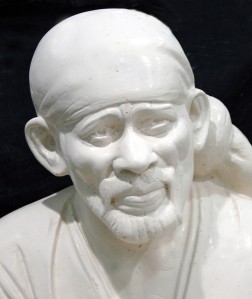 Shankaracharya tells Hindus to stop worshipping Shirdi Sai Baba
Shankaracharya tells Hindus to stop worshipping Shirdi Sai Baba
New Delhi: Shankaracharya Swaroopananda Saraswati on Monday (June 23) raised a controversy by declaring that Shirdi’s Sai Baba is not a God and should not be given special place in prayers. He even compared Nirmal Baba with Sai Baba and mentioned that it is a conspiracy to divide existing hierarchy of Gods. “This is a conspiracy to divide the belief of common man. There are only two Gods — Lord Ram and Krishna,” he added. He informed that all those people who don’t want the Government to construct Ayodhya temple are spreading these beliefs that Sai Baba was a God. Even Sai Baba trust is involved in the conspiracy. – News Nation, 23 June 2013
2 – Shankaracharya Swaroopananda says Sai Baba is not a god
New Delhi: Even as scores of people have been protesting against Dwaraka Peeth Shankaracharya Swaroopananda Saraswati for his controversial remarks against Shirdi Sai Baba, the spiritual guru is refusing to withdraw his statement. Shankaracharya is making controversial statements one after another. In his first controversial comment he had told News Nation that Sai Baba is not a God and hence should not be worshipped. Later, he said that Sai Baba followers “should not enter our temples, should not take dip in Ganga and should not chant the name of Ram. Only then they can worship Sai Baba.”
Continuing his scathing attack on Sai followers, Shankaracharya has now said that Hindus should undergo shuddhikaran or ‘purification’ process and should stop worshipping Sai Baba. “It’s their (Hindus) obligation to perform shuddhikaran by keeping a nirjala (without water) Ekadashi fast, taking a dip in Ganga and never take Sai Baba’s name,” he said. When asked why he want to remove the word Ram from Sai’s name, he said: “Ram is worshipped since time immemorial, while Shirdi Sai Baba came after him, how can people worship him?” – News Nation, 26 June 2014
3 – Case registered against Shankaracharya for his remarks on Sai Baba’s meat-eating habits
Indore: A complaint was on Thursday (June 26) filed against Shankaracharya of Dwaraka Peeth Swaroopananda Saraswati in a court here accusing him of hurting religious sentiments with his reported remarks about eating habits of Sai Baba.
Chandrakant Kunjir, a trustee of a Sai Baba temple in Sukhaliya area here, moved the Magistrate’s Court seeking registration of case against the Shankaracharya under IPC Sections 153 (promoting enmity between two communities) and 298 (statement hurting religious sentiments).
The petitioner urged JMFC Raghvendra Bhardwaj to take note of the complaint and order trial of the controversial seer.
Kunjir’s lawyer Shailendra Dwivedi said the court adjourned the hearing to August 7 when evidence in support of the complaint would be presented.
According to the complaint, the Shankaracharya had allegedly called Sai Baba a meat-eater [italics added], thereby hurting the religious sentiments of the saint’s devotees.
The Shankaracharya courted controversy a few days ago when he claimed Sai Baba was not a God, and he should not be worshipped.
Since then, cases have been filed against him in Shirdi, which houses the world-famous Sai Baba temple, Indore and Hyderabad. – Zee News, 27 July 2013
Shri Saibaba Sansthan Trust, Shirdi
Sadguru Sai Baba’s Boundless Glory
Food preparation, Handi and AnnadaanBaba considered Annadaan (donating food) as the holiest of the holy deeds. He followed the practice Himself and set an example for others. He Himself cooked food, gave Fatiya to each item of the food at the hands of a Maulavi and distributed the food with His own hands after performing Fatiya saying it was Guru prasad.
Baba had in His store only two Handis (large cooking vessels made of copper) – one sufficient for 50 and another for 100 people. Baba used the same Handis for cooking food for Hindus as well as Muslims.
In Adhyay 38 of Shri Sai Sat Charita, there is a long list of various dishes that were cooked by Baba. He lit an earthen stove and cooked Mutton, Khichdi or Mithe Chawal (sweet rice). He also cooked Hindu dishes. He Himself ground grains of Daal (pulses), wheat and Jondhalas (jowar). He prepared Bhakris from the flour. He soaked Daal in water, ground it, added condiments and made ‘Watli Daal’. He kneaded balls of Kanik (wheat flour) and made very wide Polis (bread). He even fermented Ambil in the Handis.
Those who ate meat were served non-vegetarian food. But, He never forced others to do so. However, Baba did make attempts to see whether the vegetarians were steadfast at staying away from meat.
Tatya Patil has noted down in his experience that, ‘‘During His first 40 years in Shirdi, Baba never ate meat.’’ However, in the later period, it is observed that Baba broke this rule – at least to some extent [italics added]. May be it was in an attempt to bring Hindus and Muslims together or to keep His own religion a secret? Baba always preached, ‘‘Don’t abstain from food. But, be regular in your habits.’’ He ate all the food articles brought by Hindu devotees with relish.
Baba helped several Muslims to progress in their Adhyatmik journey. Several Rohilas came to Him and – under His umbrage – stayed in Shirdi. Baba served the food to them. This has been noted in Shri Sai Sat Charita as well as in Diary of Shri Khaparde. – Extracted from Shri Saibaba Santhan Trust, Shirdi
Shri Sai Satcharitra
From Chapter 38Somebody may raise a doubt here and ask – “Did Baba distribute vegetable and animal food as prasad alike to all His devotees?” The answer is plain and simple. Those who were accustomed to (take) animal food were given food from the Handi as prasad and those who were not so accustomed, were not allowed to touch it. He never created in them any wish or desire to indulge in this food. There is a principle well established that when a Guru himself gives anything as prasad, the disciple who thinks and doubts whether it is acceptable or otherwise, goes to perdition. In order to see how any disciple has imbibed this principle, Baba at times proposed tests. For instance, on an Ekadashi day He gave some rupees to Dada Kelkar and asked him to go in person to Koralha to get mutton from there. This Dada Kelkar was an orthodox Brahmin and kept all orthodox manners in his life. He knew that offering wealth, grain and clothes etc., to a Sad-guru was not enough but that implicit obedience to and prompt compliance with His order was the real Dakshina that pleased Him most. So Dada Kelkar dressed himself and started for the place. Then Baba called him back and said, “Don’t go yourself, but send somebody.” Then Dada sent servant Pandu for the purpose. Seeing him starting, Baba asked Dada to call him back and cancelled that programme. On another occasion Baba asked Dada just to see how the saltish `Pulava‘ (mutton dish) was done. The latter said casually and formally that it was alright. Then Baba said to him – “Neither you have seen it with your eyes, nor tasted in with your tongue, then how could you say that it was good? Just take out the lid and see.” Saying this Baba caught his arm and thrust it into the pot and added, “Draw out your arm and taking a ladle, put some quantity in the dish without caring for your orthodoxy and without blustering.” When a wave of real love rises in a mother’s mind, she pinches her child with her hand and when it begins to cry and shout, she hugs it close to her bosom. Similarly Baba, in a true motherly way pinched Dada Kelkar in this fashion. Really no saint or guru will ever force his orthodox disciple to eat forbidden food and defile himself thereby.
The Handi business went on for some time till 1910 and was stopped thereafter. As stated before, Das Ganu spread the fame of Baba by his kirtans far and wide in the Bombay Presidency and people from that part of the country began to flock to Shirdi, which became in a few days a place of pilgrimage. The devotees brought with them various articles for presentation and offered various dishes of food as naivedya. The quantity of Naivedya offered by them was so much that the fakirs and paupers could feed themselves to their hearts’ content, leaving some surplus behind. Before stating how Naivedya was distributed, we shall refer to Nanasaheb Chandorkar’s story showing Baba’s regard and respect for local Shrines and deities. – Extracted from Shri Sai Satcharitra
Filed under: india | Tagged: meat-eating, muslim fakir, shirdi sai baba, sufism, swaroopanand |


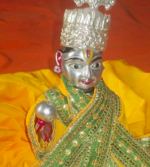






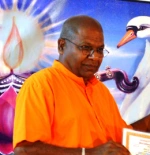

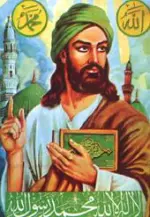
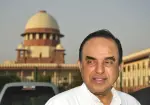


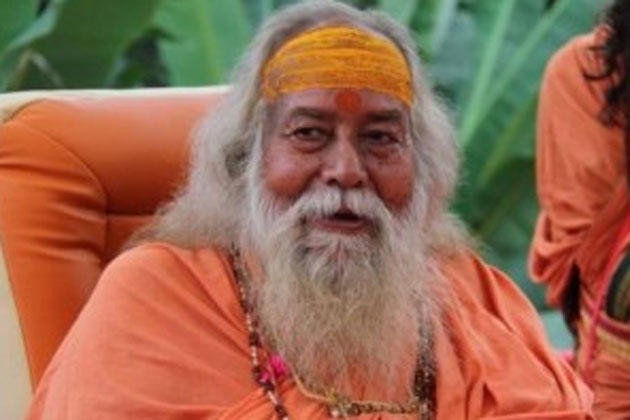
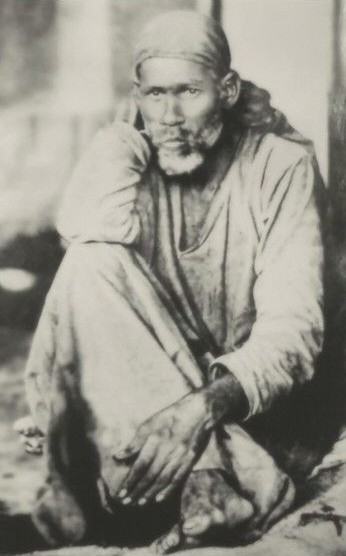
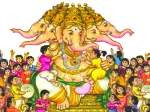



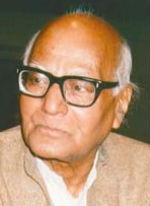






Sai vs Shankaracharya: Conflict may turn ugly – TNN – New Delhi – Jul 3, 2014, 05.17 AM IST
New Delh: An unusual confrontation is building up ever since Dwarka Shankaracharya, Swami Swaroopanand Saraswati, ran down the followers of Shirdi Sai Baba, saying they ought not to worship the 19th century mystic who was no god, and remove his photographs and idols from temples where he gets the pride of place with Hindu deities.
The 90-year-old pontiff’s comments hurt a legion of Sai devotees. In Varanasi, protests broke out soon after the Shankaracharya’s observations, while the ‘sanatani’ followers of the seer hit the streets of the temple town in the seer’s favour.
Sai devotees burnt Shankaracharya’s effigy and scores of ‘dandi sanyasins’ (staff-wielding sadhus) supported the pontiff and sat on fast condemning filing of case against the seer by Sai worshippers.
The Shankaracharya, known to be a Congress backer, also took a dig at BJP leader, Union minister Uma Bharti, saying he thought a devotee of Lord Ram had become a Union minister and a Ram temple in Ayodhya would soon be a reality, but she turned out to be the “worshiper of a Muslim” — meaning Sai Baba.
Bharti said looking upon someone as god was a personal opinion. But the seer wasn’t impressed, who said she seemed not to have seen pictures of Sai Baba depicted like Hindu Gods including Shiva and Vishnu. “Statues of Sai Baba are being installed in homes. What if they were installed in our temples?” the Shankaracharya asked.
The conflict is now threatening to grow with Swami Narendra Giri, mahant, Baghambari Mutt and member of Akhara Parishad, telling TOI that Sai Baba devotees have two days to withdraw their protests, failing which the parishad would press the fearsome Naga sadhus to settle the dispute. With their state of undress, matted hair, ash-smeared bodies and swords, the Nagas inspire fear and fascination in equal measure, and the subtext of the Akhara Parishad’s warning is the defenders of faith would be let loose on those protesting against the Shankaracharya.
Narendra Giri said. “Sai followers have left only one alternative (for us), and that is damaging and defacing their temples just as they did with the Shankaracharya’s images and photographs,” Giri tadded. Mahant Hari Giri, secretary of Juna (ancient) Akhara that controls the Nagas, said, “Naga sanyasi are protectors of (the institution) of Shankarachrya, and if there’s an attempt to malign him, the sadhus are free to take to the streets and attack them.”
But an unperturbed trustee of the Shri Saibaba Sansthan in Shirdi, Shailesh Kute, said the temple wants the controversy to rest. “The four Shankaracharyas hold an exalted position in Hinduism. The institution of Shankaracharya is a university that awards religious degrees like the 1008 Mahamandaleshwar,” Kute said.
“On the other hand, Sai Baba is a faqir without degree. Baba’s followers are growing not just in India but across the world. The Shirdi temple is the third largest in the country in terms of financial turnover and devotees. It’s possible certain segments feel threatened because Sai temples are visible on street corners. Nearly every temple to Lord Ganesh, Shri Ram and Hanuman also has an idol of Sai. People place pictures of Sai in their household shrines. Offerings to him are increasing as well,” Kute added.
On the Shankaracharya’s claim that Sai Baba is not representative of Hindu-Muslim unity, Kute said, “It’s true we don’t receive as many Muslim worshippers on a daily basis, but the community participates in the 10am aarti and offers floral chadar regularly. Shirdi is the only place where Ram Navami and Urs are celebrated every year.”
What The Seer Said:
“Hinduism is governed by Shastra and Vedas and there is no mention of Sai Baba. He should not be worshipped with Hindu gods… Muslims don’t revere Sai Baba as much as Hindus do, who seem unaware of the ‘adharma’ they commit by worshipping him.”
“They may burn my effigy or even send me to jail, but my campaign to protect the sanctity of the Hindu religion will continue…. Sai Baba was a Muslim faqir who cannot be compared to Hindu deities or worshipped like them.”
LikeLike
Thank you, Mr Nanjappa. You have made a very fine defence of Sai Baba. Or should I say you have ‘justified’ him!
The Sufis and their fakirs were the very worst enemies of Hindu Dharma. They were the Islamic missionaries, the subverters of dharma and the active converters of Hindus to Islam. Most Muslim converts in India were made by Sufis only, originally—(you say you have read SRG but apparently you haven’t). The fact that you and every other Hindu has been taken in by the Sufi is proof of their power of subversion of Truth.
As for your Advaita, Mr Nanjappa, Sita Ram Goel got it right when he said that the Vedanta that everybody mouths today has destroyed Hindu Dharma.
And so it has.
Along with all the Hindus who have lost the ability to discriminate and justify their disability with ‘radical universalism’ or Vivekananda’s new Vedanta.
The Dwarka Acharya has made a valid point about Hindus running after a Muslim fakir (though he could have stated it in a less abrasive way). Nobody has come to his defence. This is unfortunate and an indicator of the attitude of Hindus towards traditional religious authority today.
Arthur Osborne was a professor of comparative religion, a theosophist and liberal Christian man of his times. He was of some service to Ramana Maharshi as a writer of spiritual articles and interpreter of the ‘mystical East’ to Britishers. Why do you even bother with him when you have access to the real goods of Hindu Dharma?
Go away, Mr Nanjappa! You are a great disappointment indeed!
LikeLike
Two points are raised- about fulfilment of desires and Advaita. Based on what little I have read, I make a submission.
Taking the second first.. Arthur Osborne, follower and interpreter of Ramana Maharshi wrote a small book in the 50s titled “The Incredible Sai Baba”.There he paints Baba in Advaitic colours and presents his teachings in that light, often drawing comparison to Ramana’s own. Admitting that Sai Baba was a Sufi, he says that Sufism teaches secretly what Hinduism teaches openly! He contends that when Sai Baba spoke theory, it was the purest Advaita!
But such occasions were not common. His followers did not seek him out for theoretical knowledge but for some practical guidance in less sublime endeavours. But one such rare occasion is when Baba expounds the significance of the Verse 34,, chapter 4 of the Gita. beginning ‘Tad viddhi pranipadena’. This is fully recorded at two places in Sai Satcharitra. The explanation Baba gives here is so original, and true to the spirit of Advaita, i will not attempt an imperfect summary here.; it may be read in the original. The whole episode was triggered by Baba himself.Any spiritual guidance that he gave was given as a silent, secret influence, while what he gave outwardly was to do with worldly needs.
But we should remember that Osborne was a liberal scholar, had been a follower of Rene Guenon for a time before coming to Ramana Maharshi, had himself practiced Sufism and would not miss to see Unity or Oneness, given the slightest chance! Given this disposition,and his sympathy with the subject, he is prone to see everything from the Advaitic or at least symbolic angle. Thus, where Baba demands a rupee from a disciple, it would be surrender of the ego. And where he demands two, it would be faith and patience! Many Sufis had been hard Muslims. Sai Baba does not seem to represent mainstream Sufism. As Admin has said, he is a Muslim Fakir of some sort.
Now, about wish-fulfilment.This has to do not only with what Baba gave, but how he gave it.Perhaps how he gave is more important than what was given- what was sought might be simple, often not even openly expressed; but it came to people in a remarkable or memorable , inscrutable way-often called miracles..He had queer ways of dealing with people and no one could take for granted what his reaction would be in a given situation; he did not follow a formula.We Hindus would only say they flowed from some Siddhi.
Sai Bab’s miracles were well known in his own time.His devotees were mostly simple minded rural people, not the type of English educated gentlemen we saw visiting Sri Ramakrishna or Ramana Maharshi.. Their desires were also simple. But in nearly every case they were fulfilled. in memorable ways.Baba had a simple ( and single) explanation: I give devotees what they want so that they begin to want what I wish to give them!
But behind all this there was his insistence on devotees leading a simple, God-fearing life, with faith, chastity, and such traditional religious and spiritual practices followed by devout Hindu householders. There is no instance of his having ever instructed any one on Yoga, tantra,etc though some who followed such disciplines but imperfectly and suffered came to him and obtained relief.
He did stress the importance of the Guru as the link to God and told some devotees just to look up to him and he would do the rest! But there are also instances when people came to him neglecting their own traditional or old Guru and he would direct them back to them.
Thus Sai Baba was unique and is difficult to classify. This is a case where he has become even more of a cult figure after his demise, without centralised or official propaganda. Even today, the cult spreads by word of disparate mouths, and example. There is a belief that. when some one receives a book on Baba or a picture unasked, it is a sign of his blessing. He has no disciples. He stands alone. He may perhaps have the largest following among all the recent Saints.
LikeLike
Do your own research, Dr Prasad! There are reference links in the article already! They were put there for visitors like you to click!
LikeLike
sir , your statement ” Hindus worship Shirdi Sai Baba because he fulfills their wishes ” — may be almost fully true regarding the present – day HIndus , but probably the generation that lived with S’ri Baba were not so . At least a small proportion of them understood S’ri Baba to be an enlightened person , a person with divine qualities , a person fit to be worshiped for the worth of worship ; this enlightenment is despite the meat-eating , which is a janmaantara-samskara of the panchakos’a s of which the body is made ;
you said , ” Shirdi Sai Baba was a Muslim fakir ” will you please elaborate ?
in many references , it is mentioned that what S’ri Baba taught was Advaita ; though this is not relevant to the present topic , may i ask you to please elaborate on this ?
LikeLike
Admin has explained all sides of the matter. May be, the way Sai baba has been Hinduised reveals how Christianity might have got its Saints,celebrations, festivities, etc.
The ordinary devotee of any religion is not concerned with any philosophy, but with the fulfilment of earthy desires,removal of difficulties and solution to practical problems.Any source which meets these requirements is worshipped-called by various names.
Even if we believe the new Testament carries Jesus’s own words, he is seen as a stern master, If any one desired to follow him, he had to give up everything he had. He did not promise easy salvation to any one.But no religion can become popular on this basis. Christianity has therefore invented a hierarchy of desires, and the means of their fulfilment. The Catholic Church has a Saint for any purpose- one for recovery of health, one for recovery of lost articles etc and novenas are observed for each. With good results, one should say ,observing the thanks giving notices appearing in the press. Coleridge wrote: “Saints will aid if men will call, for the blue sky bends over all”
Modern evangelists make Christ himself the great agent or direct source of fulfilment of all our desires- which are of course entirely worldly.Robert Schuller will thrill us now, as not even Norman Vincent Peale could do a generation ago!
The Muslims go to their masjid for customary prayers, but they have their Dargahs for fulfilment of desires! One should see the crowd Haji Ali attracts even in busy,business like Mumbai.Submission to the will of Allah is important, but so is the lure of desires and their fulfilment. It is the promise of 72 virgins that attracts many jihadis!
Hinduism is more straight forward. it has made the pursuit of desires (artha) one of the basic duties and prescribed means of their fulfilment. So much of our religious literature deals with this- ishta kamyaartha sddhi, dukha nivrutti, parihara, prayschitta,etc.Even our Astrology is preoccupied with this. and we have a devta or deity for every purpose.
In the modern day, with the freedom enjoyed by him in religious matters, without even basic knowledge of his religion, the average Hindu has become quite eclectic; he visits any holy place, be it a Dargah, a Church, a Samadhi, etc. In the small towns, one can observe Hindu mothers taking infants to a mosque where a religious muslim will blow some incense over the child and stroke it with peacock feathers. He has pictures of Buddha, Christ, Nanak in his room along with those of Ganesh, Hanuman,etc.Sri Ramakrishna serves him as a good example- he is said to have had a picture of Christ in his room.
In the north, i heard that one should not keep pictures or photos of saints along with those of Deities./Avatars. For, however lofty, these saints wore a human body and died a human death whereas the Avatars’ bodies were not made of the five elements and were therefore not human. But this is more honoured in breach.A picture of their gurus or saints adores the puja room of every pious Hindu home, and they would claim each to be some Avatar..
.In every Tamil brahmin home one can see picture of the old Kanchi Sankaracharya, whether or not they follow what he said, even when the picture of Adi Sankaracharya is absent..This is based on personal experience of some sort. With each passing day, more such stories are coming out. Many Smartas also keep pictures of Madhva saints like Raghavendra, again based on personal experience. Here, personal favour received which is not based on theological niceties, rules..
This is supremely so in the case of Shirdi Sai Baba. Almost every devotee has become one by a personal experience., none by mere hearsay.So their devotion is not likely to be deterred by any argument.
I was introduced to Shirdi Baba over 50 years ago by a Catholic friend who was a (secret) believer. And how can you not be impressed when a 13 year old problem is solved the day after the visit to Shirdi? ( Of course, I do not know much about the wealth part)
Personally, I feel we need not make much of his meat eating. So did Rama too. In this case we accept it because he was a Kshatriya. Why not then accept Shirdi Baba as a Kshatriya? This is how we are supposed to have absorbed the Greeks into Hindu fold.
Christ said somewhere that what comes out of the mouth of man (words) is more important than what goes in ( by way of food). Did anything wrong ever come out of the mouth of Baba? He only asked people to be devoted to God, Did he seek to convert any Hindu ?
The Baba was not a Hindu, but does not appear to be its enemy.His continuing influence is undeniable. Why then disturb people’s faith without giving them a substitute? The Gita asks the wise not to disturb the faith of those who may not know .Does not the Dwaraka Acharya know this? And can he not say this in a more agreeable manner? Satyam bruyat,priyam bruyat, na bruyat satyam apriyam!
LikeLike
There appears to be some confusion over which Sai Baba the Dwarka Shankaracharya was referring to, Shirdi or Puttaparthi.
Balbir Punj in his edit in today’s New Indian Express seems to think the Dwarka Acharya was referring to Puttaparthi Sai Baba. However the Times of India identifies the baba as Shirdi Sai Baba in its news article dated June 24.
The correct identity of the baba of the present controversy is Shirdi Sai Baba.
Though the Dwarka Acharya will certainly have something to say about Puttaparthi Sai Baba too!
LikeLike
Shirdi Sai Baba was a Muslim fakir who lived in a masjid and cooked mutton pulao for his meat-eating devotees. Vegetarian food was cooked in the same vessel for his vegetarian devotees. He lived on bhiksha himself, which was collected from Hindu and Muslim houses (implying that some of the food contained meat or eggs). According to the record published on the official Sai Baba Sansthan website, Sai Baba refrained from eating meat until the latter part of his life, when he did occasionally indulge his taste for mutton (see account above).
So the Shankaracharya is right that Sai Baba was a meat-eater.
The Shankaracharya’s complaint that Sai Baba is worshipped as a God cannot be accepted. Hindus worship anything ‘as God’ that they perceive the Divine manifest in—including a guru or saint. In fact there is a strong Hindu tradition that the guru is greater than God because he is accessible and can point the disciple to God.
Indeed, the Dwarka Shankaracharya’s own devotees may consider him a God and worship him accordingly—especially the successful Dilli politicians. Has he admonished them against such a ‘false’ belief and refused their prostrations?
But the Shankaracharya’s view that Shirdi Sai Baba is not an appropriate spiritual guide for Hindus is correct.
Sai Baba was a Muslim fakir who followed Muslim traditions, blessed food with a Muslim blessing — Al-Fatiya — or had the food blessed by a Maulvi. He also cooked food for vegetarians in a pot in which mutton was previously cooked. This kind of unclean kitchen and food and blessing is entirely unacceptable for practicing Hindus.
Sai Baba also showed contempt for Hindu tradition when he forced Dada Kelkar’s hand into the mutton pulao and said, “Draw out your arm and taking a ladle, put some quantity in the dish without caring for your orthodoxy and without blustering” (see account above).
But all of this is in the past. Shirdi Sai Baba has been completely cleaned up and hinduised, dressed in gerua or kavi cloth which he never wore in his life and served sweet kesari payasam with badam in the best Vaishnava tradition.
He is also offered a lot of cash and his samadhi shrine is the wealthiest religious house in India rivaling Tirumala.
Shirdi Sai Baba had all the siddhis. Hindus worship him because he fulfills their wishes.
The Dwarka Shankaracharya should acknowledge this and submit that there is no contest here unless he can do the same.
The fact that the Dwarka Acharya is a great Vedic seer does not cut any ice with the modern devotee. What counts today are hard goods, consumables, TV sets, washing machines, fancy cars, brides with large dowries and grooms with even larger salaries. This is what the Hindu devotees want and this is what Shirdi Sai Baba gives them.
Or so the Hindu devotees of Sai Baba believe. And for sure many of them have become very wealthy after visiting Shirdi.
LikeLike